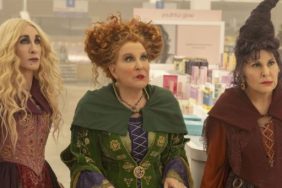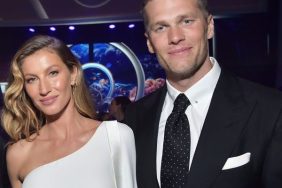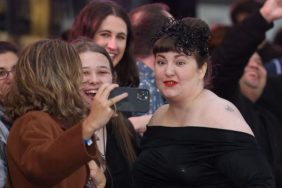
CraveOnline: You say one answer is nothing I wouldn’t expect. What wouldn’t I expect? A lot of people focus on your craft, and I have, the way you workshop with your actors and build characters from the ground up. It seems like your process is very well documented. Is there a part that isn’t as often discussed, that you think is interesting?
Mike Leigh: There is. But I’m afraid what I will now say will probably be and remain fairly enigmatic, which is that I can talk ‘til I’m blue in the face and people can write about it, fill all the libraries in the world with technical descriptions of the so-called process or whatever you call it. But what actually happens is as undefinable as any description of the creative [process].
When Leonardo paints the ceiling of the Sistine Chapel, you could say, “Well, it’s quite straightforward. He puts the scaffolding up. He gets up there, he mixes some paint and he paints the ceiling.” Or when Beethoven composes the Eroica, it’s obvious he just puts the notes down on the piece of paper and then you’ve got the Eroica there. What actually happens is indefinable and the same is true of what happens when I work with the actors and everybody else basically. There are other things that go on which are intuitive, and telepathy, and which you can’t quantify.
And yet when you tell stories about artists like in Topsy Turvy or in Mr. Turner, it seems like that’s part of the job, would be to quantify it and articulate to people, at least on the set, to tell the story, correct?
That’s confusing two completely separate things. We’ve just been talking about people outside of all this understanding what it is that we do. We understand what we’re doing. I’m not talking about that. That looks after itself. I’m not talking about that.
How do you articulate it to anyone who might need to know the information?
To whom?
“When Beethoven composes the Eroica, it’s obvious he just puts the notes down on the piece of paper and then you’ve got the Eroica there.”
In this case, your actors but to me it would be a different process. I was making a jump.
Yes, yes. And if that’s what you’re talking about, me communicating with the actors or them communicating with me or me sharing with the cinematographer, that is in the nature of communication. That’s what we do. We do it with great thoroughness and we absolutely communicate it. But again, all kinds of things go on over and above, “Do this. Go from A to B and turn around and walk back again.” There’s a whole lot of other layers and levels, ways of arriving at things which are not so easy to define.
You developed Mr. Turner for at least two years, because that’s how long Timothy Spall was practicing, or for more than that?
No, no, no, no. He did the art for two years. We were all reading over a long period but the actual rehearsals and the preparation for the shoot was six months.
That seems almost rather brief. Or is that a standard?
Well, yes, it’s standard for my films. It’s not standard for anybody else.
Everyone else seems to rush into it more. How long had you been pondering doing a J.M.W. Turner movie?
Since 1999.
Do you remember the moment you decided, “I’m going to make this movie?”
Well yeah, we’d done Topsy-Turvy. And it occurred to me somewhere along the line, and then I started looking into it as I said earlier. And it seemed a good idea.






